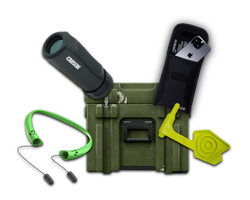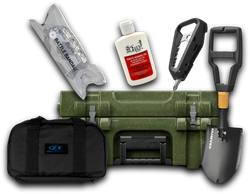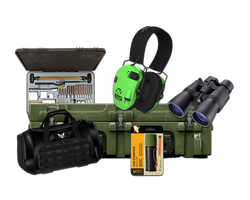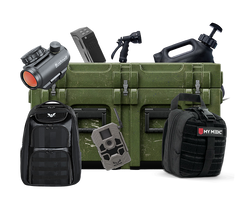Can You Bring a Sleeping Bag on a Plane? A Comprehensive Guide for Travelers
Table of Contents
- Introduction
- Understanding Airline Policies
- Packing Your Sleeping Bag
- Going Through TSA
- Benefits of Bringing Your Sleeping Bag
- Conclusion
- FAQ Section
Introduction
Imagine this: you're gearing up for an epic outdoor adventure, and the excitement of flying to your destination is palpable. However, as you pack your gear, a nagging question arises—can you bring a sleeping bag on a plane? This is a common dilemma faced by campers, hikers, and travel enthusiasts alike. Understanding airline policies on camping gear is crucial for ensuring a smooth travel experience.
Traveling with a sleeping bag can be a bit daunting due to varying airline regulations, potential baggage fees, and packing considerations. The significance of this topic extends beyond mere curiosity; it can mean the difference between a seamless journey and a frustrating one filled with unexpected charges or logistical challenges.
In this comprehensive guide, we will dissect all aspects of traveling with a sleeping bag, including airline policies, packing tips, the best ways to fit your sleeping bag into your luggage, and how to circumvent common pitfalls. By the end of this post, you will have a solid understanding of how to navigate the complexities of air travel with your beloved camping gear.
We will explore various scenarios, including whether to check your sleeping bag or to carry it on, how to pack it efficiently, and what you can expect at security checkpoints. This guide is not only for seasoned travelers but also for those who are new to flying with camping gear. Let’s get started!
Understanding Airline Policies
When it comes to flying with a sleeping bag, the first step is to understand the specific policies of the airline you are traveling with. Each airline has its own set of rules regarding baggage, and these can vary widely.
General Baggage Guidelines
Most airlines categorize items into two main groups: carry-on baggage and checked baggage. A sleeping bag can typically fall into either category, but how you choose to transport it can affect various factors, including fees and convenience.
-
Carry-On Baggage: Many airlines allow a personal item and a carry-on bag. If your sleeping bag is compact enough, you might be able to fit it into your carry-on allowance. However, ensure it adheres to the size restrictions set by the airline. Generally, a sleeping bag can be packed down significantly using a compression sack, allowing it to fit within the standard dimensions for carry-on luggage.
-
Checked Baggage: If you prefer not to carry your sleeping bag onboard, you can check it in. However, this may incur an additional fee, especially with low-cost carriers. Check the airline's baggage policy for details regarding weight limits and potential fees.
Specific Airline Examples
While it’s not feasible to delve into every airline’s policy, here are a few examples that illustrate the general trends:
-
American Airlines: Sleeping bags are allowed in both checked and carry-on luggage. If you can fit it in your carry-on, it’s advisable to do so, as this avoids potential mishaps with checked luggage.
-
Southwest Airlines: Known for their generous baggage policy, Southwest allows travelers to check bags for free. This means you can check your sleeping bag without worrying about additional fees.
-
JetBlue: Passengers are typically allowed to bring one personal item and one carry-on bag. However, be cautious with the size of your sleeping bag if you plan to include it in your carry-on.
Prohibited Items
While sleeping bags generally do not fall under prohibited items, it's crucial to familiarize yourself with what is not allowed. Items such as camping stoves, fuel, and sharp objects like knives or axes are typically banned from carry-on luggage. Always check the airline's list of prohibited items to avoid any complications at the airport.
Packing Your Sleeping Bag
Packing your sleeping bag efficiently is key to ensuring it travels well, whether you choose to carry it on or check it in. Here are some effective packing strategies:
Use a Compression Sack
One of the best investments you can make for your sleeping bag is a compression sack. This tool reduces the volume of your sleeping bag significantly, allowing it to fit easily into your luggage. Here’s how to use one effectively:
-
Select the Right Size: Ensure the compression sack is suitable for your sleeping bag’s dimensions. Most sleeping bags come with their own compression sacks, but if yours didn’t, you can purchase one separately.
-
Roll, Don’t Stuff: When packing your sleeping bag into the compression sack, roll it tightly instead of stuffing it haphazardly. This not only saves space but also helps maintain the bag's insulation properties.
-
Secure It Properly: Once packed, tighten the compression straps to minimize bulk. This will make it easier to fit in your luggage without taking up unnecessary space.
Packing Techniques
If you decide to check your sleeping bag, ensure it is well protected:
-
Use a Durable Bag: If you don’t have a hard-sided suitcase, consider using a thick, durable duffel bag to protect your sleeping bag from potential damage.
-
Layer Your Gear: When packing, layer your sleeping bag with other soft items like clothes or blankets. This adds protection and maximizes space.
-
Label Your Bag: If your sleeping bag is checked, consider labeling it with your contact information. This step can be helpful should your bag get lost.
Carry-On vs. Checked Baggage
Deciding whether to carry your sleeping bag on or check it in depends on several factors:
-
Travel Duration: For short trips, carry it on to avoid checked baggage fees and the hassle of waiting at baggage claim.
-
Airline Policy: If the airline has strict carry-on regulations, you may want to check it to avoid surprises.
-
Personal Preference: If you’re worried about potential damage to your sleeping bag, checking it might be the safer option.
Going Through TSA
Navigating TSA security with your camping gear can be one of the most stressful parts of travel. Understanding what to expect can make this process smoother.
Tips for Smooth TSA Screening
-
Declare Your Items: If you’re carrying your sleeping bag in a compression sack, be prepared to take it out for inspection. Declaring it upfront can help expedite the process.
-
Be Mindful of Other Gear: If you’re traveling with other camping equipment, like a portable stove or sharp tools, be aware that these may be flagged during screening. Place these items in your checked bag whenever possible.
-
Prepare for Security Checks: If carrying a sleeping bag, keep it easily accessible at the top of your carry-on bag. This will help expedite the security process by allowing TSA agents to see it quickly.
Understanding TSA Regulations
According to TSA regulations, sleeping bags are generally not considered hazardous items and can be brought in either checked or carry-on baggage. However, if your sleeping bag includes any additional components like a sleeping pad with built-in insulation, be sure to check if those parts are allowed.
Benefits of Bringing Your Sleeping Bag
Now that we’ve covered the logistics, let’s discuss the benefits of bringing your sleeping bag when flying.
Comfort and Familiarity
Having your sleeping bag with you means you can enjoy the comfort of your own gear, no matter where you are. Sleeping bags are designed for warmth and comfort, tailored to your specific preferences. This can make a significant difference in your overall travel experience.
Versatility
Sleeping bags are not just for camping; they can also serve multiple purposes during travel. You can use your sleeping bag as a blanket on long flights, for warmth during layovers, or even as a makeshift pillow.
Emergency Preparedness
Traveling with your sleeping bag means you are always prepared for unexpected situations. Whether you face an unplanned overnight stay due to flight delays or need to camp unexpectedly, having your sleeping bag ensures you're ready.
Conclusion
In summary, the question can you bring a sleeping bag on a plane? is met with a resounding yes, provided you understand the airline's policies and pack it properly. Whether you opt to carry it on or check it, the right approach will ensure a hassle-free travel experience.
Remember to use a compression sack, check the size and weight limits of your airline, and be prepared for TSA security. With these tips in hand, you can confidently bring your sleeping bag along on your next adventure, ready to explore the great outdoors.
Call to Action
Before your next trip, consider joining the Crate Club community for curated tactical gear and survival tools. With subscription options ranging from Lieutenant to General, Crate Club can help you gear up for any adventure. Check out the Crate Club Subscription Services to find the perfect plan for you. Also, explore the Crate Club Shop for top-tier gear that will enhance your outdoor experience.
FAQ Section
Can I bring a sleeping bag as a carry-on?
Yes, if it meets the airline's size restrictions for carry-on luggage. Consider using a compression sack to minimize its bulk.
What if my sleeping bag is too large for carry-on?
If your sleeping bag exceeds the carry-on size limit, you must check it. Be aware of additional baggage fees that may apply.
Can I use my sleeping bag on the plane?
While you can bring your sleeping bag onboard, you cannot use it as a sleeping bag during the flight for safety reasons. However, you can use it as a blanket.
Are there fees for checking a sleeping bag?
Fees depend on the airline’s baggage policy. Low-cost carriers often charge for checked luggage, while others may allow a sleeping bag to be checked as part of your luggage allowance.
Is it safe to check my sleeping bag?
Yes, but ensure it is packed securely in a durable bag to avoid damage during transit.
Share this article



